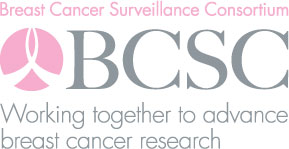Explanation of Risk Factors
- Prior breast diseases
- The calculator is NOT applicable to women with previous diagnosis of breast cancer or ductal carcinoma in situ (DCIS).
- Age
- The risk of developing breast cancer increases with age. The great majority of breast cancer cases occur in women older than age 50. Most cancers develop slowly over time. For this reason, breast cancer is more common among older women.
- The calculator is NOT applicable to women younger than age 35 or older than age 74
- Race/ethnicity
- The risk calculator is calibrated for non-Hispanic white, non-Hispanic black, Asian/Native Hawaiian/Pacific Islander, Native American/Native Alaskan, and Hispanic women. If the woman's race/ethnicity is other or unknown, the tool will use data for non-Hispanic white women to estimate the risk.
- Family history
- Having one or more first-degree relatives (mother, sisters, daughters) who have had breast cancer increases a woman's chances of developing this disease.
- Breast biopsy
- Women who have had breast biopsies have an increased risk of breast cancer, especially if their biopsy specimens showed atypical ductal hyperplasia or lobular carcinoma in situ.
Women who have a history of breast biopsies are at increased risk because of breast changes that can be observed on mammograms and prompt the biopsies.
Breast biopsies themselves do not cause cancer.
- Breast density
- Women who have high breast density have an increased risk of breast cancer. Breast density is determined by the relative amounts of fat, epithelial, and connective tissues that appear differently on a mammogram due to differences in X-ray attenuation.
Fat appears radiolucent or dark, while epithelial and connective tissues are radiographically dense and appear light or white.
A dense breast has less fat than glandular and connective tissue.
Mammograms of breasts with high density are harder to read and interpret than those of less dense breasts and women with dense breasts are more likely to develop breast cancer.
Explanation of Results
Risk estimates calculated by the tool are estimates of absolute breast cancer risk.
Absolute breast cancer risk is the chance or probability of developing invasive breast cancer in a defined time interval.
Although a woman's risk may be accurately estimated, these predictions do not allow one to say precisely which woman will develop breast cancer.
In fact, the distribution of risk estimates for women who develop breast cancer overlaps the estimates of risk for women who do not.
Average risk is based on U.S. breast cancer incidence for women of the same age and race taking into account the chance of being diagnosed with DCIS or dying of a non-breast cancer cause.
This is version 2.0 of the invasive breast cancer risk calculator. An updated invasive breast cancer risk calculator (version 3.0) can be found here.
- Additional Reference
- Tice JA, Miglioretti DL, Li CS, Vachon CM, Gard CC, Kerlikowske K. Breast density and benign breast disease: Risk assessment to identify women at high risk of breast cancer. J Clin Oncol. 2015 Oct 1;33(28):3137-43. doi: 10.1200/JCO.2015.60.8869. Epub 2015 Aug 17. PMC4582144
- Tice JA, Cummings SR, Smith-Bindman R, Ichikawa L, Barlow WE, Kerlikowske K. Using clinical factors and mammographic breast density to estimate breast cancer risk: development and validation of a new predictive model. Ann Intern Med. 2008 Mar 4;148(5):337-47. PMC2674327
|
